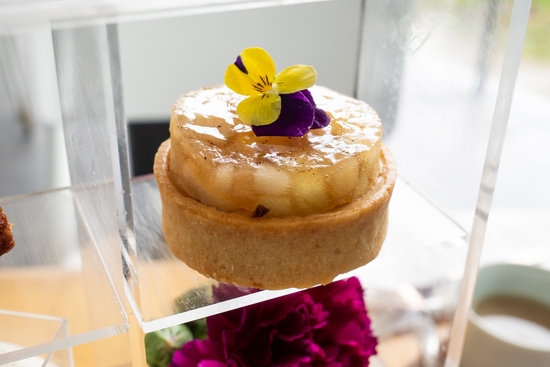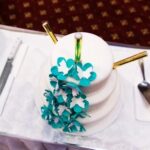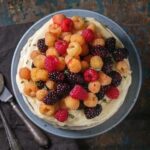Are you looking to learn how to professionally decorate a cake? Cake decorating is more than just a hobby; it is an art form that allows individuals to express their creativity and showcase their skills. Whether you are a beginner or an experienced baker, mastering the art of professional cake decorating can take your creations to the next level.
Professional cake decorating not only enhances the visual appeal of your cakes but also adds a personal touch to your baked goods. From weddings and birthdays to special occasions, a beautifully decorated cake can become the centerpiece of any event. In this article, we will explore the essential tools, techniques, and tips needed to elevate your cake decorating skills and create stunning confections that will impress your friends and family.
With the right tools and materials, proper preparation techniques, and knowledge of basic and advanced decorating techniques such as piping, fondant work, and sculpting, you can turn a simple cake into a work of art. Whether you are looking to start a career in bakery or simply want to hone your baking skills at home, mastering professional cake decorating techniques is sure to set you apart in the world of baking.
Let’s delve into the world of professional cake decorating and unleash your creativity through the art of beautifully decorated cakes.
Essential Tools and Materials Needed for Cake Decorating
When it comes to professionally decorating a cake, having the right tools and materials is essential to achieving a flawless finish. Here are some key items that every aspiring cake decorator should have in their arsenal:
Piping Bags and Tips
Piping bags and tips are crucial for creating intricate designs on your cakes. Whether you are using buttercream, royal icing, or ganache, having a variety of piping tips in different sizes and shapes will allow you to execute various decorating techniques with precision.
Offset Spatula
An offset spatula is a must-have tool for smoothing frosting on the sides and top of your cake. Its angled blade makes it easier to spread icing evenly and create clean edges. A good quality offset spatula will also help you achieve sharp corners and smooth finishes.
Turntable
A turntable is an indispensable tool for professional cake decorators as it allows you to easily rotate your cake while decorating. This enables you to work on all sides of the cake without having to move around too much, resulting in more consistent and symmetrical designs.
By investing in these essential tools and materials, you will be well-equipped to learn how to professionally decorate a cake like a pro. Remember, practice makes perfect, so don’t be afraid to experiment with different techniques and styles to find what works best for you.
Preparing the Cake for Decorating
When it comes to professionally decorating a cake, the preparation of the cake itself plays a crucial role in achieving a flawless finished product. One of the first steps in preparing a cake for decorating is leveling the layers. This ensures that your cake has an even surface, making it easier to stack and decorate. Using a long serrated knife or a cake leveler, carefully trim off any domed tops to create a flat surface.
After leveling your cake layers, the next step is crumb coating. This involves applying a thin layer of frosting or ganache all over the cake to seal in any crumbs. This initial coating sets the foundation for your final decorations and prevents any loose crumbs from showing through your final layer of frosting.
Once you have leveled and crumb coated your cake layers, it’s time to stack them on top of each other. Make sure each layer is securely placed on top of one another, using dowels or wooden skewers if necessary for stability.
Stacking your layers properly will ensure that your final decorated cake remains intact and visually appealing. These preparatory steps are essential in creating a canvas that is ready for your creative touch when it comes to professional cake decorating techniques.
Choosing the Right Frosting and Filling for Your Cake
Another popular option for frosting cakes is fondant. Fondant is a smooth sugar paste that can be rolled out and draped over cakes to create a sleek and polished look. Fondant is perfect for creating intricate designs, covering flaws on the cake surface, and adding decorative elements like flowers or figures. However, it may not be as tasty as buttercream to some people, so it’s important to consider both aesthetics and flavor when choosing your frosting.
When it comes to fillings, there are countless options to choose from depending on the flavor profile you want to achieve. Some popular choices include fruit preserves, flavored buttercreams, ganache, whipped cream, or even layers of fresh fruit.
Consider the overall taste you want to create with your cake when selecting a filling that complements both the cake layers and frosting. By carefully choosing the right frosting and filling combination, you can elevate your cake decorating skills and create a truly professional-looking dessert masterpiece.
| Types of Frosting | Popular Fillings |
|---|---|
| Buttercream | Fruit Preserves |
| Fondant | Ganache |
| Whipped Cream | Flavored Buttercreams |
Basic Cake Decorating Techniques
Cake decorating is an art form that requires skill, precision, and creativity. Whether you’re a beginner or a seasoned baker looking to enhance your skills, mastering basic cake decorating techniques like piping, fondant work, and buttercream flowers is essential. These techniques can elevate your cakes from homemade to professional-looking works of art.
To professionally decorate a cake, it’s crucial to have the right tools and materials on hand. Some essential items include piping bags and tips for creating intricate designs, fondant for smooth finishes and sculpting details, and a variety of food coloring for vibrant decorations. Investing in quality tools will make the decorating process smoother and more enjoyable.
Here are some basic cake decorating techniques to help you get started:
- Piping: Practice different piping techniques like rosettes, shells, and borders using different tips.
- Fondant Work: Roll out fondant evenly to cover cakes or create shapes like bows or flowers.
- Buttercream Flowers: Learn how to create beautiful flowers using buttercream icing with various petal designs.
By mastering these fundamental techniques and experimenting with different designs, colors, and textures, you’ll soon be able to achieve professional-looking cakes that will impress your friends and family. Remember that practice makes perfect when it comes to cake decorating, so don’t be afraid to experiment and try new things.
Advanced Cake Decorating Techniques
Once you have mastered basic cake decorating techniques such as piping and fondant work, you may want to challenge yourself by exploring advanced techniques like sculpting, painting, and texturing. These techniques can take your cakes to the next level and truly showcase your creativity and skill as a professional cake decorator.
Sculpting cakes allows you to create unique shapes and designs that go beyond traditional round or square cakes. Whether you are sculpting a 3D character or an intricate design, it is important to start with a firm and chilled cake to make the process easier. Use a sharp knife or sculpting tools to carve out the desired shape, making sure to work slowly and gradually to avoid mistakes.
Painting on cakes can add depth and dimension to your designs, bringing them to life in vibrant colors. To paint on a cake, use food-safe edible paints or gel colors diluted with clear alcohol or lemon extract for a smooth application. Practice on a piece of parchment paper before painting directly on the cake to ensure that you are comfortable with your technique.
Texturing cakes can add visual interest and enhance the overall look of your design. You can achieve texture using various tools such as combs, brushes, or even unconventional items like sponges or crumpled plastic wrap.
Experiment with different textures and techniques to find what works best for your specific cake decorating style. By incorporating sculpting, painting, and texturing into your repertoire of skills, you can elevate your cake decorating abilities and create stunning works of art that will impress clients and guests alike.
Tips for Achieving Smooth and Clean Cake Finishes
Achieving a smooth and clean finish on a cake is essential to elevate the overall look of your creation. Whether you are a beginner or an experienced baker, mastering this skill will make your cakes look polished and professional. Here are some tips on how to achieve smooth and clean cake finishes:
- Start with a Level Base: Before applying frosting, make sure your cake layers are level. Use a serrated knife or cake leveler to trim off any domed tops to create an even surface for decorating.
- Crumb Coat: Apply a thin layer of frosting called a crumb coat all over the cake. This will seal in any loose crumbs and create a smooth base for the final coat of frosting.
- Chill Your Cake: After applying the crumb coat, chill your cake in the refrigerator for at least 30 minutes to allow the frosting to set. This will make it easier to apply the final layer of frosting without picking up any crumbs.
Once you have prepared your cake with a level base and applied the crumb coat, you are ready to move on to the final step of achieving smooth and clean cake finishes:
- Apply Final Coat of Frosting: Using an offset spatula, apply a generous amount of frosting to cover the entire cake. Start at the top and work your way down the sides, smoothing as you go. Make sure to apply enough frosting to create an even layer without exposing any cake crumbs.
- Smooth with Viva Paper Towels: To achieve a perfectly smooth finish, gently press Viva paper towels against the frosted cake and lightly run your hand over them in circular motions. This will help remove any imperfections and create a flawless surface.
- Final Touches: Once you have achieved a smooth finish, add any additional decorations or piping details as desired. Stand back and admire your professionally decorated cake.
By following these tips for achieving smooth and clean cake finishes, you can take your cake decorating skills to the next level and create stunning desserts that look as good as they taste. Practice makes perfect, so don’t be afraid to experiment with different techniques until you find what works best for you.
Troubleshooting Common Cake Decorating Mistakes
Common mistakes can happen to even the most seasoned cake decorators, but knowing how to troubleshoot these issues can make all the difference in the final outcome of your creation. One common problem faced by decorators is air bubbles in the frosting or fondant. To prevent this, make sure to smooth out your frosting or fondant as you apply it and use a pin to gently poke any air bubbles and smooth them out.
Another common mistake is a cake that bulges at the sides when stacked and frosted. This can be caused by too much filling between layers or not allowing the cake to settle before decorating. To fix this issue, try using less filling or letting your cake sit for a bit before applying your final layer of frosting.
Color bleeding in decorations is also a frustrating problem that many decorators face. To avoid this, be sure to let your colored decorations dry completely before attaching them to your cake. Additionally, using gel-based food coloring instead of liquid coloring can help prevent bleeding and keep your decorations looking sharp.
| Troubleshooting Mistakes | Recommended Solution |
|---|---|
| Air bubbles in frosting/fondant | Smooth out and poke with pin |
| Bulging sides on stacked cakes | Use less filling or allow cake to settle |
| Color bleeding in decorations | Use gel-based coloring and let decorations dry completely |
Taking Your Cake Decorating to the Next Level
Are you looking to take your cake decorating skills to the next level and turn your passion into a profession? Taking courses, workshops, or certification programs can help you refine your techniques, learn new trends, and expand your creativity in the world of cake decorating. Whether you are a beginner looking to build a strong foundation or an experienced decorator seeking to enhance your skills, there are plenty of opportunities available to help you grow as a professional cake decorator.
One of the most effective ways to improve your cake decorating abilities is by enrolling in a reputable cake decorating course. These courses cover a wide range of topics, from basic piping techniques to advanced fondant work and sculpting.
Additionally, they often provide hands-on training and guidance from experienced instructors who can offer valuable feedback and tips on how to professionally decorate a cake. Look for courses that fit your skill level and interests, whether it’s learning how to create intricate sugar flowers or mastering the art of textured buttercream finishes.
Workshops are another great way to enhance your cake decorating skills in a more intensive and focused setting. These short-term classes usually have specific themes or techniques that participants can dive deep into within a shorter timeframe.
Workshops offer the opportunity to interact with other aspiring decorators, exchange ideas, and gain practical experience under the guidance of skilled professionals. By attending workshops regularly, you can stay updated on industry trends, sharpen your skills, and expand your portfolio of designs and techniques for decorating cakes professionally.
Furthermore, obtaining a certification in cake decorating can boost your credibility as a professional decorator and open up more opportunities for career advancement. Certification programs cover various aspects of cake decorating, including safety guidelines, sanitation practices, design principles, color theory, and business management.
With a reputable certification under your belt, clients will have more confidence in your abilities as a cake decorator. Consider exploring different certification programs offered by culinary schools or professional organizations to further develop your expertise in the art of creating beautifully decorated cakes for any occasion.
Conclusion
In conclusion, mastering the art of professional cake decorating can truly be a rewarding and fulfilling journey for any baking enthusiast. By equipping yourself with the essential tools, materials, and techniques outlined in this guide, you can create stunning cakes that not only look amazing but also taste delicious. From basic piping skills to advanced sculpting and painting techniques, there are endless possibilities for expressing your creativity through cake decorating.
To truly elevate your cake decorating skills, consider enrolling in courses, workshops, or certification programs that can provide you with valuable insights and hands-on experience. These opportunities will not only help you refine your techniques but also connect you with a community of like-minded individuals who share your passion for cake design.
Whether you aspire to start your own bakery or simply want to impress friends and family with your creations, continuous learning and practice will help you hone your craft.
In the end, remember that professional cake decorating is not just about creating visually stunning desserts-it’s also about spreading joy and happiness through edible works of art. So don’t be afraid to experiment, take on new challenges, and let your imagination run wild. With dedication, patience, and a dash of creativity, you can learn how to professionally decorate a cake that will leave a lasting impression on anyone who has the pleasure of indulging in it.
Frequently Asked Questions
What Do Professionals Use to Decorate Cakes?
Professionals use various tools and techniques to decorate cakes, such as piping bags, offset spatulas, fondant cutters, edible paints, stencils, and airbrush kits. They also use different types of icing like buttercream, royal icing, and fondant to create intricate designs.
How Do You Decorate a Cake Like a Professional?
To decorate a cake like a professional, it’s important to start with a well-leveled and crumb-coated cake. Using a turntable can help achieve smoother frosting application. Techniques like piping borders, creating rosettes or flowers with buttercream, and using fondant for more elaborate designs can give the cake a professional finish.
How Do You Make a Cake More Professional?
Making a cake more professional involves paying attention to details such as smooth frosting application, neatly piped decorations, even layers throughout the cake, and clean edges. Choosing complementary flavors and fillings that are well-balanced can also elevate the overall presentation of the cake. Additionally, practicing basic decorating skills regularly can help improve your techniques over time.

Welcome to our cake decorating blog! My name is Destiny Flores, and I am the proud owner of a cake decorating business named Cake Karma. Our mission is to provide delicious, beautiful cakes for all occasions. We specialize in creating custom cakes that are tailored specifically to each customer’s individual needs and tastes.





